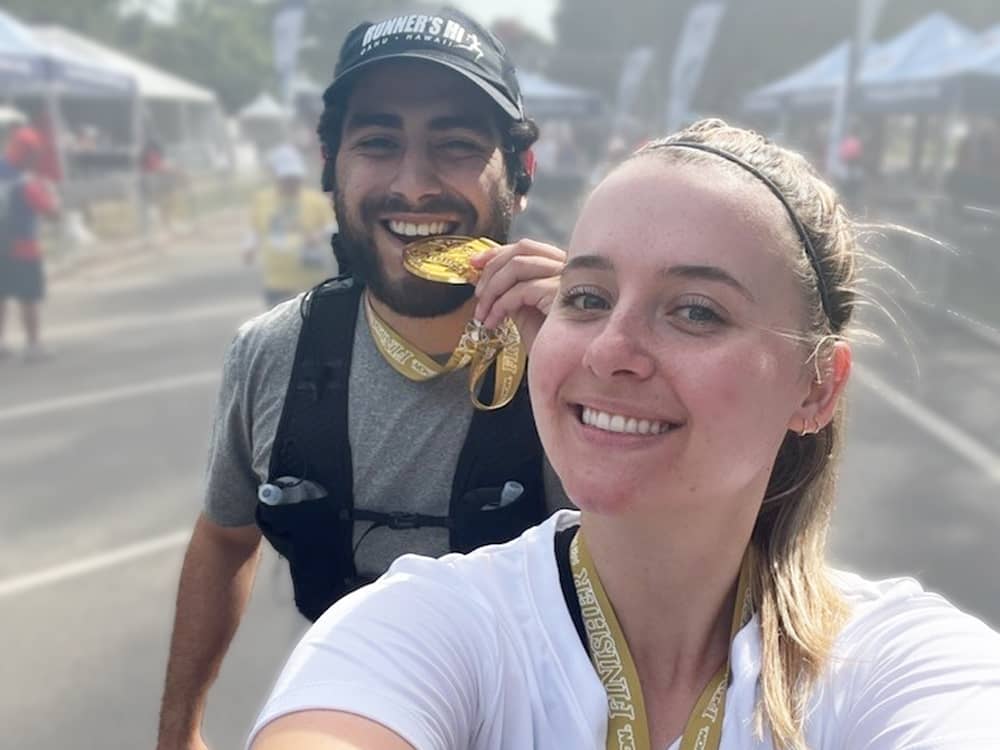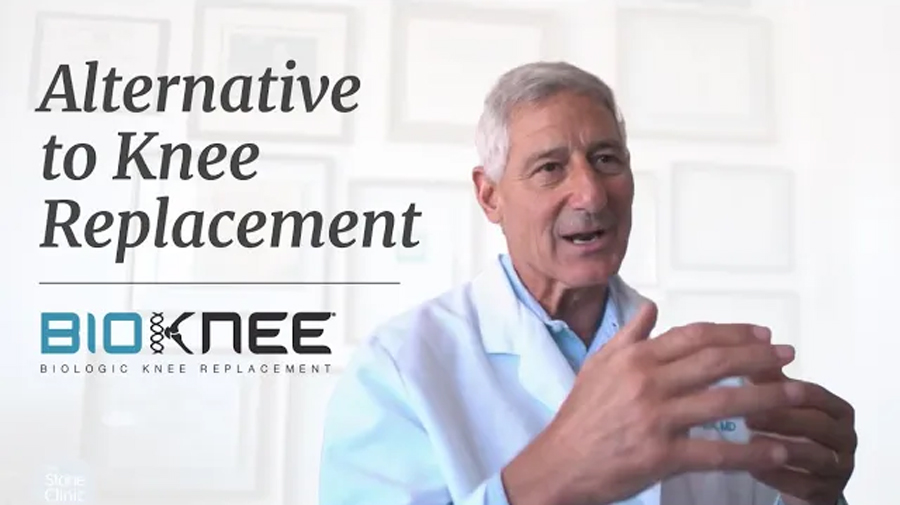Running After Biologic Knee Replacement
Hear From Our Patients
13 Years Running on a Biologic Knee ReplacementBiologic knee replacement involves replacing and regrowing the key structures of the knee joint. Patients choose this procedure to avoid artificial joint replacement and they often plan to return to high-intensity exercise. Here is the latest thinking on how to keep running on the knee’s natural tissues.

Meniscus transplant and articular cartilage paste graft patient Samantha B. after finishing her first marathon just 16 months after her BioKnee surgery.
First of all, eighty percent of patients told they need an artificial knee replacement, don’t. Their knees have simply worn out in one part or another. Depending on the kind of wear, a biologic or an artificial partial replacement is often an option. Knee replacement with biologic tissues and regeneration of cartilage has developed over the last thirty years and now includes meniscus replacement, articular cartilage regrowth, and ligament reconstruction augmented with regenerative injections of growth factors.
The most common story we hear is that an athlete hurt his or her knee in high school or college. A surgeon removed part of their meniscus or shaved down the bone’s bearing surface (called the articular cartilage). Their ACL may have been reconstructed. Fifty percent of the patients with an ACL injury develop arthritis ten years later. Those who have had a significant portion of their meniscus resected develop early arthritic changes in the injured part of the knee. By the ages of 40 to 70, most of these still-active people present to our clinic saying they have been told to live with their pain and undergo an artificial knee replacement when they are older.
For these patients, as long as there is some joint space evident on their X-rays, the articular cartilage can be grafted with a technique called articular cartilage paste grafting. The meniscus can be replaced with a donor meniscus and the knee stabilized, if necessary, with a donor ligament reconstruction. These tissues are augmented with growth factors from Platelet-Rich-Plasma (the patient’s own blood), and the joints treated with a combination of PRP and lubrication injections (annually, if necessary).
Returning to impact sports, including running, depends on the speed of healing and the training level of the patient. We are seeing patients return earlier than expected to marathons, triathlons, and endurance events, sometimes at one year after surgery. And though our data is still in collection, we are not seeing damage proportionate to activities. Joints that do well with biologic reconstruction, it appears, have a favorable biology and mechanics that permit extreme exercise; whereas joints that have an arthritic predisposition tend to degrade independent of the patient’s activity choices. In view of this we encourage our patients to rebuild their muscles, optimize their gait mechanics, and enjoy their sports. The beauty of biologic repairs is that no bridges are burned. The procedures can be repeated and the active life of the athlete extended.
Our goal is to help people play forever. Our research is directed at expanding and improving these novel biologic procedures. As we say: Cancer may kill you, but arthritis ruins your life. We believe that there is no need for this treatable, preventable, and possibly curable disease to proliferate.
Even for patients requiring a partial or total knee replacement, our robotic surgery program can help athletes return to running after knee replacement.



